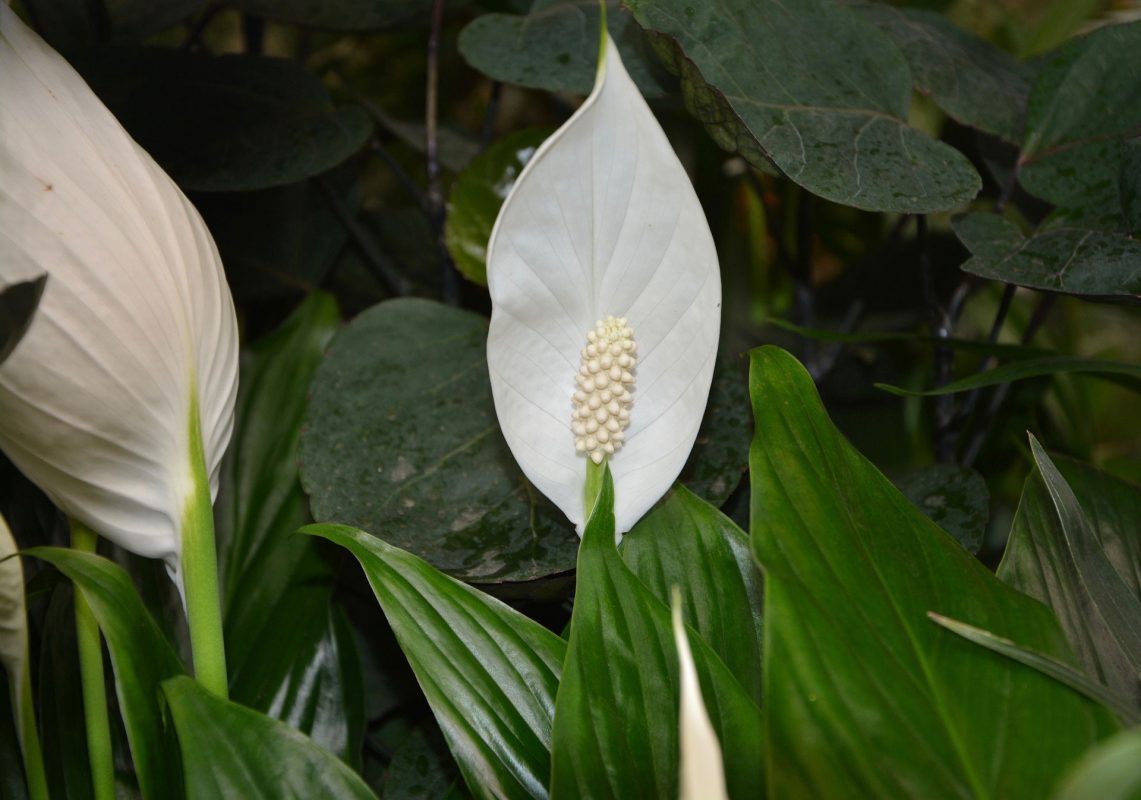The Peace Lily is a favorite houseplant. In the spring, it produces long-lasting white blooms. The plant itself has glossy oval leaves with a striking point that emerge from the soil. They are tropical plants and do exceptionally well when potted indoors under the right conditions.
Of all the flowering house plants, Peace Lily care is probably the easiest. In fact, it tolerates average indoor conditions better than many house plants. It’s good for you, too. This is one of the best plants for improving air quality indoors. It has one of the top removal rates of toxins such as formaldehyde, ammonia and carbon monoxide from tainted indoor air.
Blooms usually appear in early summer and last for weeks. The pale green spathe turns white as it opens and surrounds the protruding spadix that is densely covered by its tiny, true flowers.
When flowers start to fade, cut off the flower stalks as close to the base as possible.
No blooms? Plants that fail to bloom usually aren’t getting enough sunlight. Move your plant to a brighter location, but keep it out of direct sun, which can scorch leaves. Got an older plant that refuses to bloom? If you haven’t divided it in several years, divide it in spring. This is one of the few plants I know that blooms better after dividing it.
Dark-green, glossy leaves are strongly veined and arch away from the plant’s base, making this an attractive foliage plant when not in bloom. Keep its leaves dust-free by wiping them with a damp cloth.
When caring for peace lily plants, remember that its leaves will indicate any problems. Brown leaf tips are likely caused by overwatering. Water thoroughly, but don’t allow the soil to get soggy. It could also be caused by direct sun. Move it to a shadier spot and be careful not to overwater. If the leaves become shriveled and dry, the humidity is too low. You can increase humidity by misting the plant or placing it on a tray of wet pebbles.

